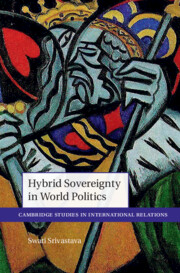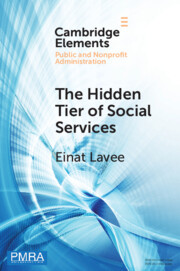Refine search
Actions for selected content:
80 results
A longitudinal study of men with male genital schistosomiasis in southern Malawi associated with human, zoonotic and hybrid schistosomes
-
- Journal:
- Parasitology , First View
- Published online by Cambridge University Press:
- 07 October 2025, pp. 1-13
-
- Article
-
- You have access
- Open access
- HTML
- Export citation
An investigation of female genital schistosomiasis and associated genital infections in Southern Malawi
-
- Journal:
- Parasitology , First View
- Published online by Cambridge University Press:
- 01 September 2025, pp. 1-12
-
- Article
-
- You have access
- Open access
- HTML
- Export citation
5 - Blended Learning
- from Part II - Environments
-
-
- Book:
- The Cambridge Handbook of Technology in Language Teaching and Learning
- Published online:
- 15 June 2025
- Print publication:
- 26 June 2025, pp 75-89
-
- Chapter
- Export citation
Hybrid sparse array design using Delaunay Triangulation and Convex optimization for wide beam steering
-
- Journal:
- International Journal of Microwave and Wireless Technologies / Volume 17 / Issue 3 / April 2025
- Published online by Cambridge University Press:
- 28 March 2025, pp. 409-417
-
- Article
- Export citation
4 - Scope of MiCA
-
- Book:
- The EU Law on Crypto-Assets
- Published online:
- 28 February 2025
- Print publication:
- 06 March 2025, pp 40-60
-
- Chapter
- Export citation
Chapter 32 - Anaesthesia for Cardiac Catheterisation and Other Investigative Procedures in Children
-
-
- Book:
- Core Topics in Paediatric Anaesthesia
- Published online:
- 06 February 2025
- Print publication:
- 13 February 2025, pp 357-367
-
- Chapter
- Export citation
Chapter One - Urban Dignity and Villa Delights
- from Part I - Villa and Palace
-
- Book:
- Villa and Palace in the Venetian Renaissance
- Published online:
- 12 December 2024
- Print publication:
- 09 January 2025, pp 19-55
-
- Chapter
- Export citation
Invasive eelgrass hybrid (Vallisneria × pseudorosulata) in the southeastern United States
-
- Journal:
- Invasive Plant Science and Management / Volume 18 / 2025
- Published online by Cambridge University Press:
- 23 December 2024, e2
-
- Article
-
- You have access
- Open access
- HTML
- Export citation
Strategic genetic amelioration of quality protein maize (QPM) germplasm and its utilization in hybrid breeding
-
- Journal:
- Plant Genetic Resources / Volume 22 / Issue 6 / December 2024
- Published online by Cambridge University Press:
- 23 September 2024, pp. 359-367
-
- Article
- Export citation
Bioinspired planar switched beam network using Butler matrix on a flexible substrate targeting multifaceted millimeter-wave applications
-
- Journal:
- International Journal of Microwave and Wireless Technologies / Volume 16 / Issue 4 / May 2024
- Published online by Cambridge University Press:
- 02 April 2024, pp. 625-635
-
- Article
- Export citation
Acute kidney injury in hypoplastic left heart syndrome patients following the comprehensive stage two palliation
-
- Journal:
- Cardiology in the Young / Volume 34 / Issue 3 / March 2024
- Published online by Cambridge University Press:
- 11 August 2023, pp. 552-558
-
- Article
- Export citation
The myxozoan parasite Myxobolus bejeranoi (Cnidaria: Myxozoa) infection dynamics and host specificity in hybrid tilapia aquaculture
-
- Journal:
- Parasitology / Volume 150 / Issue 6 / May 2023
- Published online by Cambridge University Press:
- 10 March 2023, pp. 524-530
-
- Article
-
- You have access
- Open access
- HTML
- Export citation
14 - Lyric, Essay
- from Part III - Technologies of the Essay
-
-
- Book:
- The Cambridge Companion to The Essay
- Published online:
- 27 October 2022
- Print publication:
- 03 November 2022, pp 215-228
-
- Chapter
- Export citation
7 - Conclusions on Power and Responsibility in Hybrid Sovereignty
-
- Book:
- Hybrid Sovereignty in World Politics
- Published online:
- 01 September 2022
- Print publication:
- 08 September 2022, pp 229-240
-
- Chapter
- Export citation
Introduction
-
- Book:
- Hybrid Sovereignty in World Politics
- Published online:
- 01 September 2022
- Print publication:
- 08 September 2022, pp 1-11
-
- Chapter
- Export citation
1 - Hybrid Sovereignty in International Theory
-
- Book:
- Hybrid Sovereignty in World Politics
- Published online:
- 01 September 2022
- Print publication:
- 08 September 2022, pp 12-39
-
- Chapter
- Export citation
2 - Ideal-Types of Public/Private Hybridity
-
- Book:
- Hybrid Sovereignty in World Politics
- Published online:
- 01 September 2022
- Print publication:
- 08 September 2022, pp 40-69
-
- Chapter
- Export citation

Hybrid Sovereignty in World Politics
-
- Published online:
- 01 September 2022
- Print publication:
- 08 September 2022

The Hidden Tier of Social Services
- Frontline Workers' Provision of Informal Resources in the Public, Nonprofit, and Private Sectors
-
- Published online:
- 01 August 2022
- Print publication:
- 18 August 2022
-
- Element
- Export citation
A review of source models to further the understanding of the seismicity of the Groningen field
- Part of
-
- Journal:
- Netherlands Journal of Geosciences / Volume 101 / 2022
- Published online by Cambridge University Press:
- 27 May 2022, e11
-
- Article
-
- You have access
- Open access
- HTML
- Export citation
